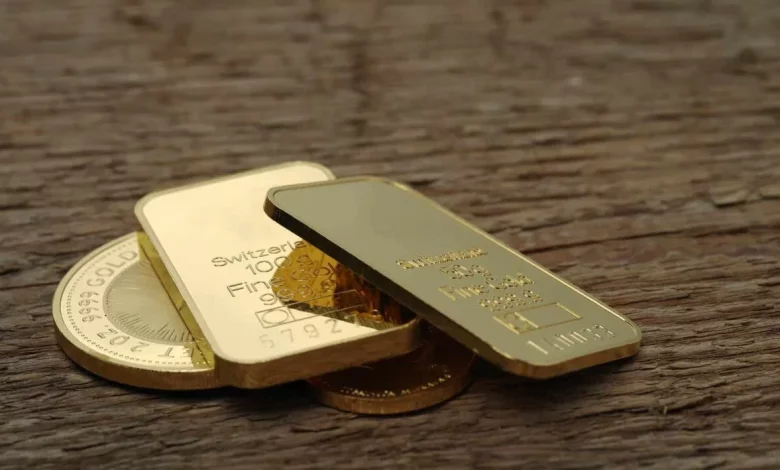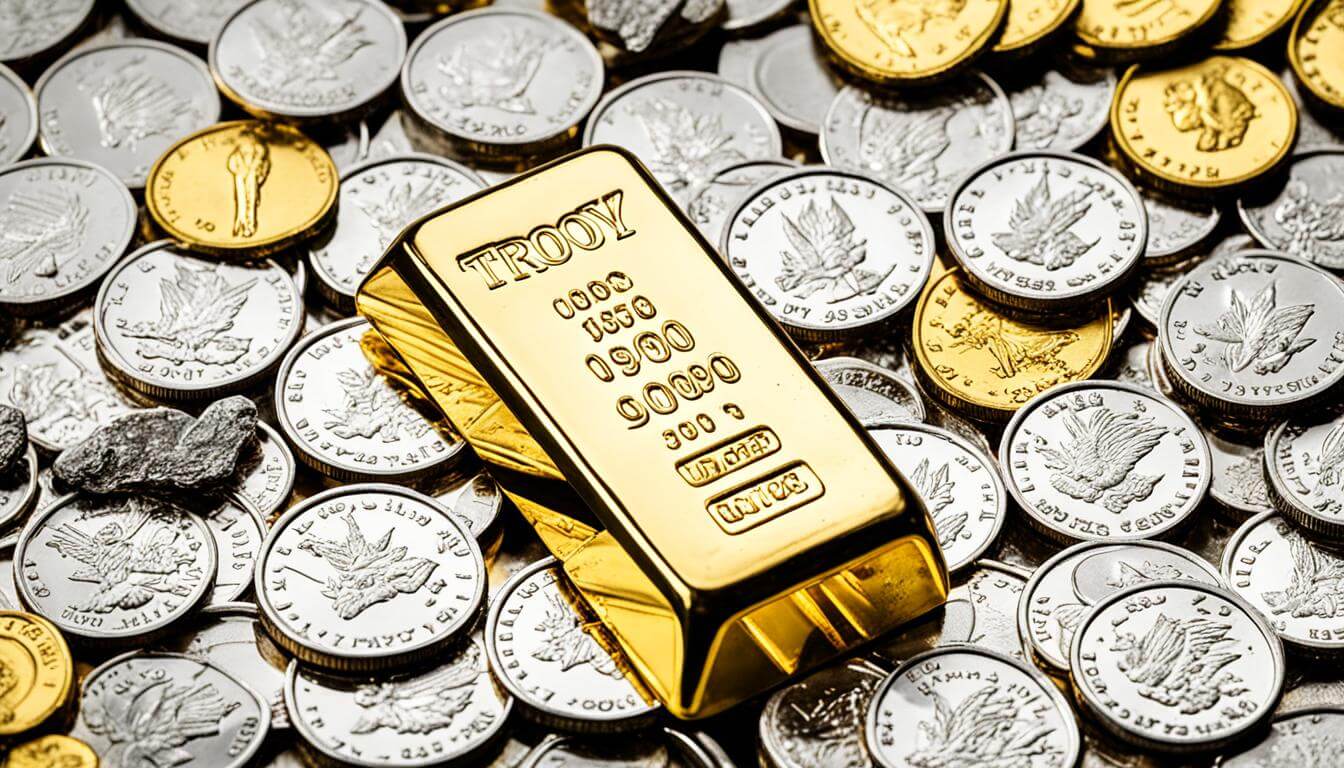Understanding Troy Ounce In Precious Metals

In the world of precious metals, understanding the concept of a troy ounce is crucial for investors and traders. A troy ounce is a specific unit of weight measure used exclusively for precious metals like gold, silver, platinum, and palladium. Unlike the standard ounce used for everyday items, a troy ounce ensures accurate weight standards and purity in the precious metals market.
Originating from the French town of Troyes during the Middle Ages, the troy ounce has a long history as the standard unit of measurement in the precious metals industry. It is equivalent to 31.1034768 grams, slightly higher than the standard ounce used for other commodities. This standardized measurement has been adopted worldwide and maintains consistency in the trading of precious metals.
Whether you’re trading or investing in precious metals, it is crucial to understand the distinction between the troy ounce and other weight measurements. This knowledge allows for accurate valuation and fair transactions based on weight accuracy. By grasping the importance of the troy ounce, you can navigate the world of precious metals with confidence.
Stay tuned to learn more about the history of the troy ounce, its differences from avoirdupois ounce, and the various investment options in the precious metals market.
History Of The Troy Ounce
The troy ounce, a unit of measure for weighing precious metals, has a fascinating history that dates back to the Middle Ages. Its origin can be traced to the French town of Troyes, where a vibrant trade market attracted merchants from all corners of the world.
During this time, a standardized weight system was crucial for conducting business transactions. It was in Troyes that the French troy system, closely related to the troy weight system used today, was developed.
Interestingly, the adoption of the troy weight system in Britain can be attributed to King Henry II. In the 1400s, King Henry II incorporated the troy weight system into Britain’s coinage system, recognizing its importance in facilitating fair trade.
By the 15th century, the troy ounce had become the official standard measurement for gold and silver in Britain. This marked a significant milestone in establishing the troy ounce as a trusted unit of measure in the precious metals industry.
The United States followed suit in 1828, adopting the troy ounce as the standard measurement for precious metals. This decision further solidified the troy ounce’s status as a widely recognized and accepted unit of measure in the global market.

Troy Ounce Vs. Avoirdupois Ounce
The measurement of weight can vary depending on the context. When it comes to weighing precious metals like gold, silver, platinum, and palladium, two commonly used units of measurement are the troy ounce and the avoirdupois ounce.
The avoirdupois ounce is the standard unit of weight used for everyday items such as sugar and grains. On the other hand, the troy ounce is specifically used for measuring precious metals. It’s important to understand the difference between these two units to ensure accurate weight standards in the trading and investing of precious metals.
So, what is the difference between a troy ounce and an avoirdupois ounce? The key distinction lies in their respective weights. One troy ounce is slightly heavier than one avoirdupois ounce. In fact, one troy ounce is equivalent to 1.09714286 avoirdupois ounces or approximately 31.1034768 grams.
In the precious metals market, the troy ounce is the standard unit of measurement, ensuring consistency and accuracy in assessing the value of these valuable commodities. Traders and investors need to be aware of this distinction to avoid any discrepancies in their transactions.
Having a clear understanding of the troy ounce and the avoirdupois ounce is crucial in the world of precious metals. It allows for precise weight measurements and adherence to standardized weight standards, ultimately ensuring fair and accurate trading and investment practices.
Investing In Precious Metals
When it comes to investing in precious metals, there are several options available that can help you diversify your portfolio and potentially secure your financial future. Precious metals, such as gold, silver, platinum, and palladium, offer a unique investment opportunity due to their historical value and the role they play in various industries.
One popular method of investing in precious metals is through commodity exchange-traded funds (ETFs) or mutual funds. These funds allow you to invest in a basket of precious metals without physically owning the metal itself. This can be a convenient option for investors who are looking for exposure to the precious metals market while enjoying the liquidity and ease of trading that ETFs provide.
Another way to invest in precious metals is by purchasing common stock shares of companies in the metals and mining sector. By investing directly in these companies, you gain a more direct stake in the precious metals industry. However, it’s important to note that investing in individual stocks carries a higher level of risk compared to investing in ETFs or mutual funds, as the performance of the stocks is tied to the success of the company.
If you have more experience in trading, you may also consider participating in the futures and options markets for precious metals. These markets allow you to speculate on the future price movements of metals like gold and silver. However, it’s worth mentioning that futures and options trading is typically dominated by professional traders and requires a good understanding of the market dynamics and risk management strategies.
For investors looking for a tangible form of investment, gold certificates can be an attractive option. Gold certificates represent a portable gold equivalent but are not backed by any government. These certificates provide an alternative to physically owning and storing gold while still allowing you to benefit from the potential increase in its value over time.

Conclusion
The troy ounce, as a standardized unit of measure, plays a crucial role in the world of precious metals. This measurement method, dating back to the Middle Ages, ensures weight accuracy and standardized trading practices. Precious metals like gold, silver, platinum, and palladium are evaluated using the troy ounce, allowing for consistency and fairness in transactions based on accurate weight measurements.
Understanding the concept of the troy ounce is of paramount importance for anyone involved in the precious metals industry. Whether you’re an investor looking to diversify your portfolio or a trader seeking opportunities in the market, knowing the difference between a troy ounce and other weight measurements is vital for accurate valuation and trading decisions.
By embracing the troy ounce as the standardized measurement for precious metals, the industry upholds stringent purity standards and maintains a level playing field for all participants. It ensures that buyers and sellers have a common language when determining the value of precious metals, leading to transparent and reliable transactions.
FAQ
What Is A Troy Ounce?
A troy ounce is a unit of measure used for weighing precious metals like gold, silver, platinum, and palladium. It is slightly higher than the standard ounce used for other commodities.
Where Did The Troy Ounce Originate?
The troy ounce is believed to have originated in the French town of Troyes during the Middle Ages. It became closely related to the troy weights system used today.
When Was The Troy Ounce Adopted In Britain And The US?
King Henry II of England adopted the troy weight system in the 1400s, and it became the official standard measurement for gold and silver in Britain in the 15th century. The US followed suit in 1828.
What Is The Difference Between A Troy Ounce And An Avoirdupois Ounce?
The troy ounce is used for precious metals, while the avoirdupois ounce is commonly used for everyday items like sugar and grains. The troy ounce is slightly heavier than the avoirdupois ounce.
How Can I Invest In Precious Metals?
There are various options available for investing in precious metals. You can consider commodity exchange-traded funds (ETFs) or mutual funds, investing in common stock shares of companies in the metals and mining sector, or trading in the futures and options markets. Another option is to purchase gold certificates, which represent a portable gold equivalent.
Why Is Understanding The Troy Ounce Important In Investing?
Understanding the troy ounce is crucial for accurately assessing the value of precious metals in investment scenarios. It ensures accurate weight measurements and allows for fair transactions based on purity standards.









